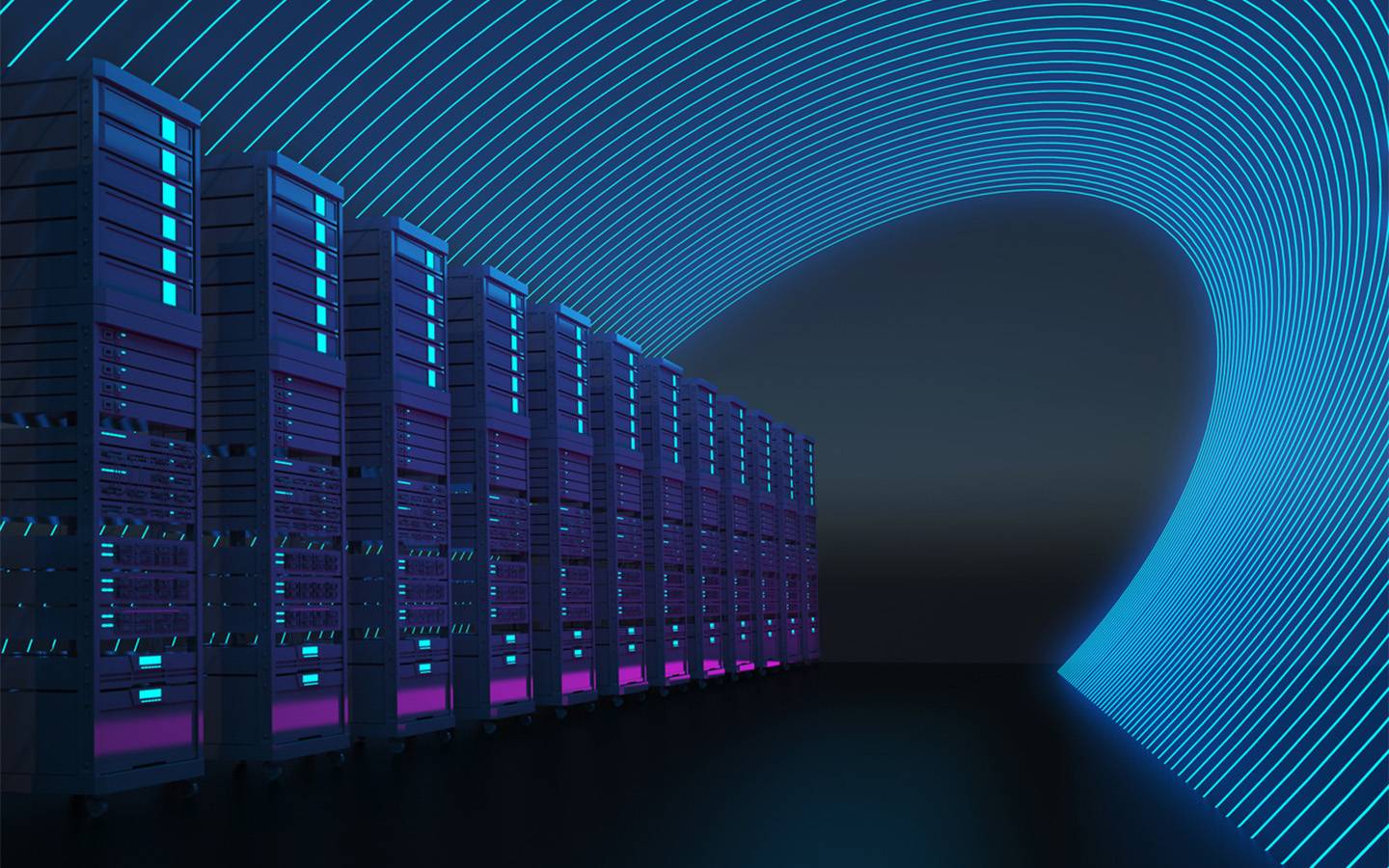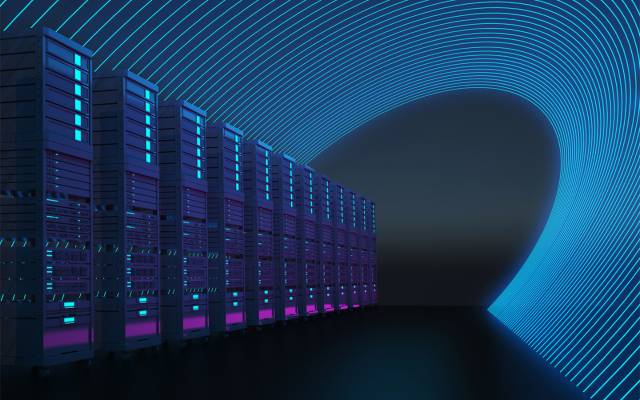Businesses deal with unprecedented amounts of data that continues to grow exponentially. As a result, data centers are under immense pressure to accommodate the current data surge and future, long-term requirements.
The ability to properly store data can be determined by how flexible and scalable the enterprise data centers are. If you’re unable to scale your infrastructure while maintaining data availability and security requirements, your company runs the risk of data breaches, inefficiencies, and cost overruns.
That’s why cost-effective scalability solutions and effective processes are essential for managing continuous expansion.
Managing Data Center Growth
CIOs and enterprise IT managers must manage digital transformation across increasingly complex infrastructure—from on-premise storage solutions to cloud and hybrid systems—to host, process, and store data.
It’s essential to have a sense of growth needs and anticipate how to properly manage data at scale now instead of reacting later. Tied in with that is capacity planning. Can an internal data center effectively manage network and data requirements, or are multi-cloud or hybrid cloud solutions better options?
Lastly, there’s a need to strike a balance between growth and cost. To create a scalable data center while maintaining today’s operational effectiveness, CIOs and IT specialists must operate within the set budget.
Considerations of Data Center Scalability
Successfully managing data growth requires a multifaceted approach since there are so many factors to consider. By implementing effective strategies, data centers can evolve while optimizing costs and maintaining a high level of performance.
Here are key considerations:
Rising Energy Consumption
The amount of energy needed to run a data center is high. And as centers expand, there may be increased demands on energy to provide enough electricity and cooling. With growing energy consumption, CIOs will have to strike a balance between cost considerations and corporate social responsibility and sustainability requirements. Assess energy sources and search for more affordable, energy-efficient hardware that minimizes e-waste and uses less computer power, thereby reducing carbon footprints.
Ensuring Data Security and Privacy
Scaling can introduce vulnerable points that can result in hacking and data breaches. Each extra server, storage unit, application, and network device must have the proper security in place. As mass capacity storage needs increase, it’s crucial to establish procedures for maintaining and updating access restrictions and encryption along with conducting security audits.
Infrastructure Upgrades Costs
Infrastructure expansion and upgrades have various costs—the immediate financial outlay for new hardware or software, and the longer term costs associated with maintenance, energy, and staffing. It’s vital to factor in the total cost of ownership (TCO) plus future needs, and compare that with the anticipated benefits of scaling, including evaluating which storage solution makes it easy to integrate new components for expansion.
Server Loads and User Traffic
As user traffic increases, the burden on servers does, too. Servers can become overwhelmed without efficient load balancing and traffic management, leading to slow response times or downtimes. Understanding patterns in server loads and user traffic helps storage solutions providers design scalable architectures that cater to peak demands. Also, you should look to work with vendors that have reliable support with regular updates to ensure compatibility with evolving data storage requirements.
Storage Solutions and Asset Management
Scalability isn’t just about storing more data but doing it efficiently. Efficient asset management ensures storage systems are optimized for use, minimizing waste and redundancy. Determine if you need a storage solution that allows for horizontal and vertical scaling. A modular approach may be an option, as modular data centers allow for adding and removing capacity and performance components as needed.
Network Connectivity and Bandwidth Requirements
Organizations want scalable networks that handle an increasing number of servers and growing data without lags, congestion, or impacts on workloads. First assess bandwidth requirements and implement high-speed interconnects to help ensure seamless connectivity. Then test the scalability of the storage system in real-world scenarios to identify any bottleneck, speed, or performance issues as the storage capacity grows.
AI and Machine Learning in Data Center Scalability
Modern data centers can leverage AI and machine learning for scalability. These technologies can predict growth trends, optimize energy consumption, enhance security measures, and automate routine tasks. AI uses predictive analysis to anticipate infrastructure needs and potential failures, reallocating resources in real time. At the same time, machine learning can enhance security by detecting irregularities and ensuring safe scaling.
Virtualization
Virtualization decouples hardware from software, allowing multiple virtual servers or storage units to run on a single machine. This approach optimizes resource utilization and simplifies storage management, which provides flexibility in resource allocation based on real-time needs. Virtualization offers the agility to meet evolving demands while reducing overhead…a key for any scalable data center’s efficiency and cost-saving strategy.
Implementation of Scalable Infrastructure
When scaling a data center, determining your needs and which key factors to consider is only part of the process. The next is implementation. A well-executed implementation strategy helps ensure the infrastructure meets all your current needs and supports future-proof growth.
Here are the key areas of focus for best practices:
Design and Deployment
Start by designing data center architecture that meets your current needs and anticipates future expansion. To optimize performance without overspending, coordinate network and storage scalability, integrating virtual local area networks (VLANs) for load balancing, and storage area networks (SANs) or network-attached storage (NAS) for additional capacity needs.
Additionally, choose hardware that is both efficient and adaptable to get the most value. That may include considering cloud services like hybrid or multicloud models to scale more effectively while potentially finding a way to lower costs.
Of course, security is critical so robust firewalls and compliance checks need to be in place. And finally, testing before deployment is essential to identify any inefficiencies and maximize your return on investment. Ultimately, your goal should be to replicate your design blueprint when setting up your infrastructure, thereby maximizing efficiency without sacrificing cost savings.
Post-Implementation Monitoring and Maintenance
Post-implementation is another time to balance efficiency and cost savings. Once the data center is active, it’s crucial to continuously monitor and oversee its infrastructure health and performance. Advanced tools are essential for real-time diagnostics to offer insights into maintaining peak efficiency without running up unnecessary expenses.
Energy consumption directly correlates with the primary operational costs of a data center, so tracking that component ensures optimal resource utilization and can lead to cost savings. Energy monitoring can also help prevent heat-related issues that can increase downtime and compromise equipment performance.
Prioritize security updates to prevent breaches and create a disaster recovery plan for when any issues arise. Taking a proactive approach helps companies safeguard against unforeseen disruptions. CIOs and IT professionals need to recognize that scalability is dynamic and plan for its evolution over the long term, which can help optimize operational efficiency.
Future Trends in Data Center Scalability
What’s innovative today might be obsolete tomorrow. Remaining ahead of the curve is pivotal, especially with regard to scalability. Here are some emerging trends that IT professionals and CIOs should pay attention to:
- Supply chain issues: The last few years have seen supply chain disruptions, and those continue to linger in this sector. Potential material and labor shortages—and the rising costs of transporting components and raw goods from service providers—may delay some companies’ expansion plans and increase costs.
- AI and automation: AI plays a significant role in data center scalability—especially with optimizing resource utilization—as well as predicting and preventing downtime. Automating routine data center processes can help improve productivity and adaptability.
- Edge computing: Edge computing helps reduce latency and improve performance, which is increasingly important as the number of connected devices and data they generate grows. Tied to edge computing is the increase in hyperscale data centers.
- Environmental concerns: Sustainability efforts may also drive some organizations towards green or cleaner energy to help power data centers. Some large companies may transition to solar-powered-supported data center operators, for example, and find ways to reduce or optimize water consumption for cooling.
The future of data center scalability will be shaped by a combination of technological advancements, future expansion, evolving business needs, and environmental concerns.
Increasing Importance of Scalability in the Modern Business Landscape with Seagate
Regardless of size, businesses are generating and leveraging data at unprecedented rates. This explosive growth underscores the importance of data center operations and scalability for companies today while still finding the most value for the spend.
Enterprises need reliable solutions they can trust to provide 24/7 uptime, allowing for agility and adaptability when required. Scalability ensures an organization can swiftly adapt to changing data requirements, meeting today's needs and anticipating future growth.
Seagate Enterprise Hard Drives and SSDs meet those needs with proven, reliable performance, maximized data storage capacity, and seamless integration. That ensures your data infrastructure meets your needs—now and into the future—while maintaining efficiency and cost savings.
Talk to an expert at Seagate today to learn more about how to effectively scale your enterprise storage systems.







